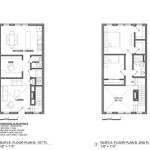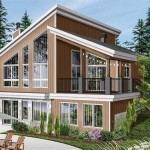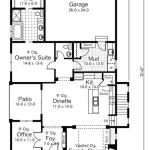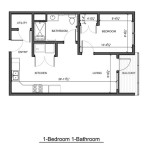Japanese House Plan: Traditional Meets Modern Design with Flooring Planks
Japanese house plans, renowned for their harmonious blend of nature, functionality, and aesthetics, are experiencing a resurgence globally. While deeply rooted in tradition, contemporary interpretations seamlessly integrate modern design principles and materials. This evolution is particularly evident in the use of flooring planks, which serve as a critical element in bridging the gap between the past and present, offering both practical benefits and visual appeal.
Traditional Japanese homes, or *minka*, were characterized by natural materials such as wood, paper, and clay. Historically, flooring consisted of *tatami* mats, woven from rice straw, which provided a comfortable and culturally significant surface. However, the demands of modern living have prompted a diversification in flooring options, with flooring planks emerging as a popular choice for their durability, versatility, and stylistic flexibility. The integration of flooring planks must carefully consider the underlying Japanese aesthetic.
Modern Japanese house plans often prioritize open floor plans, natural light, and minimalist décor. Flooring planks, particularly those with a light or neutral finish, can contribute to this sense of spaciousness and airiness. Furthermore, the linear nature of planks complements the clean lines and geometric forms that are characteristic of contemporary Japanese design. Using the correct wood choice with the correct color and texture is crucial for balancing tradition with modern aspects.
The Allure of Natural Materials: Wood Species and Finishes
The selection of wood species for flooring planks plays a significant role in achieving the desired aesthetic and functional qualities in a Japanese house plan. Traditional choices, such as cedar ( *sugi* ) and cypress ( *hinoki* ), are prized for their beauty, durability, and fragrant aroma. These woods are often left unfinished or treated with natural oils to enhance their inherent characteristics. The use of these native species helps retain a sense of place and respect for the environment.
However, modern Japanese homes may also incorporate hardwoods like oak, maple, or ash, which offer greater resistance to wear and tear. These woods can be stained or finished to mimic the appearance of traditional Japanese woods or to complement a more contemporary color palette. The choice of finish is also important, as it can affect the texture, sheen, and overall appearance of the flooring planks. Matte finishes, for example, tend to create a more natural and understated look, while glossy finishes can add a touch of elegance and sophistication. Consider the different types of wood grain that may be present, and use them to create a variety in texture. Using a consistent color helps to avoid a chaotic appearance.
The sustainability of the wood source is an increasingly important consideration for environmentally conscious homeowners. Choosing flooring planks made from sustainably harvested wood helps to minimize the environmental impact of the construction process. Certification programs, such as the Forest Stewardship Council (FSC), can provide assurance that the wood comes from responsibly managed forests. Also important is the selection of finishing products, which should be low VOC and non-toxic.
Bridging Tradition and Modernity: Design Considerations
Integrating flooring planks into a Japanese house plan requires careful consideration of the overall design aesthetic. One key element is the *wabi-sabi* philosophy, which embraces imperfection, simplicity, and the beauty of natural materials. Flooring planks with subtle variations in color, grain, and texture can embody this principle, adding character and depth to the space. Leaving knots and other imperfections in the wood can add to this effect. This principle should be balanced with the need for functionality.
Another important consideration is the relationship between the flooring and other design elements, such as walls, ceilings, and furniture. In traditional Japanese homes, the color palette is typically muted and natural, with a focus on earth tones and neutral shades. Flooring planks should complement this palette, either by matching the existing colors or by providing a subtle contrast. The size and orientation of the planks can also affect the overall look of the room. Longer, wider planks can create a sense of spaciousness, while shorter, narrower planks can add a more intimate feel. The direction of the planks can also draw the eye to certain features of the room.
The transition between different flooring materials should also be carefully planned. For example, a seamless transition between *tatami* mats and flooring planks can create a harmonious blend of traditional and modern elements. This transition can be accomplished through the use of transition strips or by carefully aligning the flooring materials. Consider how the feel of each material will complement the other, and provide the right sensory experience for the occupants. The traditional Japanese experience is about stimulating all senses, not just sight.
Practical Advantages: Durability, Maintenance, and Comfort
Beyond their aesthetic appeal, flooring planks offer several practical advantages for modern living. Compared to *tatami* mats, flooring planks are generally more durable and resistant to wear and tear. They are also easier to clean and maintain, requiring only regular sweeping and occasional mopping. The proper use of a quality floor cleaner can help to maintain the floor's original appearance for years.
The choice of flooring planks can also affect the comfort level of the home. Some wood species, such as cedar and cypress, have natural insulating properties that can help to regulate the temperature of the room. Flooring planks can also be combined with underfloor heating systems to provide radiant heat, which is a comfortable and energy-efficient way to warm the home. Choose the correct thickness of the plank to ensure proper heat transfer if using radiant heating.
The acoustic properties of flooring planks should also be considered, especially in open floor plans. Hardwood floors can sometimes amplify sound, which can be disruptive in a quiet environment. To mitigate this issue, homeowners can install area rugs or use acoustic underlayment to dampen sound transmission. The incorporation of soft fabrics and materials throughout the home can help to balance the hard surfaces like flooring planks. The use of sound absorbing panels on the walls can also help to reduce echo.
Moreover, the installation of flooring planks can be a relatively straightforward process, especially with the advent of engineered wood flooring. Engineered wood flooring consists of multiple layers of wood veneer bonded together, making it more stable and resistant to moisture than solid wood flooring. This type of flooring can be installed using a variety of methods, including gluing, nailing, or floating. The floating method is particularly popular, as it allows for easy installation and removal without damaging the subfloor. Careful attention should be given to the subfloor preparation to ensure a level and smooth surface for installation.
In conclusion, the integration of flooring planks into Japanese house plans represents a thoughtful evolution that balances tradition with the demands of modern living. By carefully considering the selection of wood species, design elements, and practical advantages, homeowners can create a space that is both aesthetically pleasing and functionally efficient. The use of flooring planks can enhance the overall harmony and serenity that are characteristic of Japanese design, providing a comfortable and inviting environment for years to come.

East Meets West In 3 Modern Japanese Homes

Standout Japanese Home Style Where Craftsmanship Meets Creative Quirks

20 Beautiful Architectural Examples Of Japanese Modern Houses Architects Com

Tatami Japan S Traditional Flooring

Traditional Japanese Elements Meet Modern Design At The Cocoon House Decoist

Free Traditional Japanese Interior Image At Stockcake

20 Beautiful Architectural Examples Of Japanese Modern Houses Architects Com

What Is Engawa Exploring Japanese Indoor Outdoor Spaces

15 Modern Japanese House Ideas For Elegant Living

Lacing Tradition With Modernity How Japanese Style Homes Celebrate The Future Past Indesign Live Interior Design And Architecture
Related Posts








